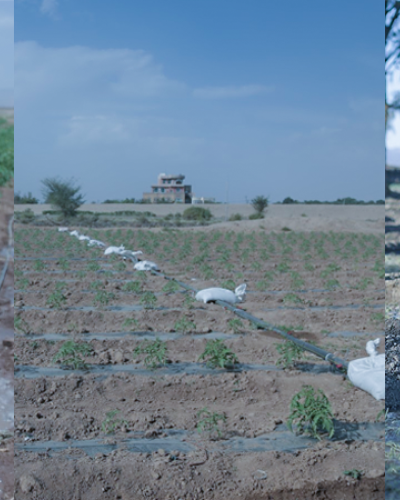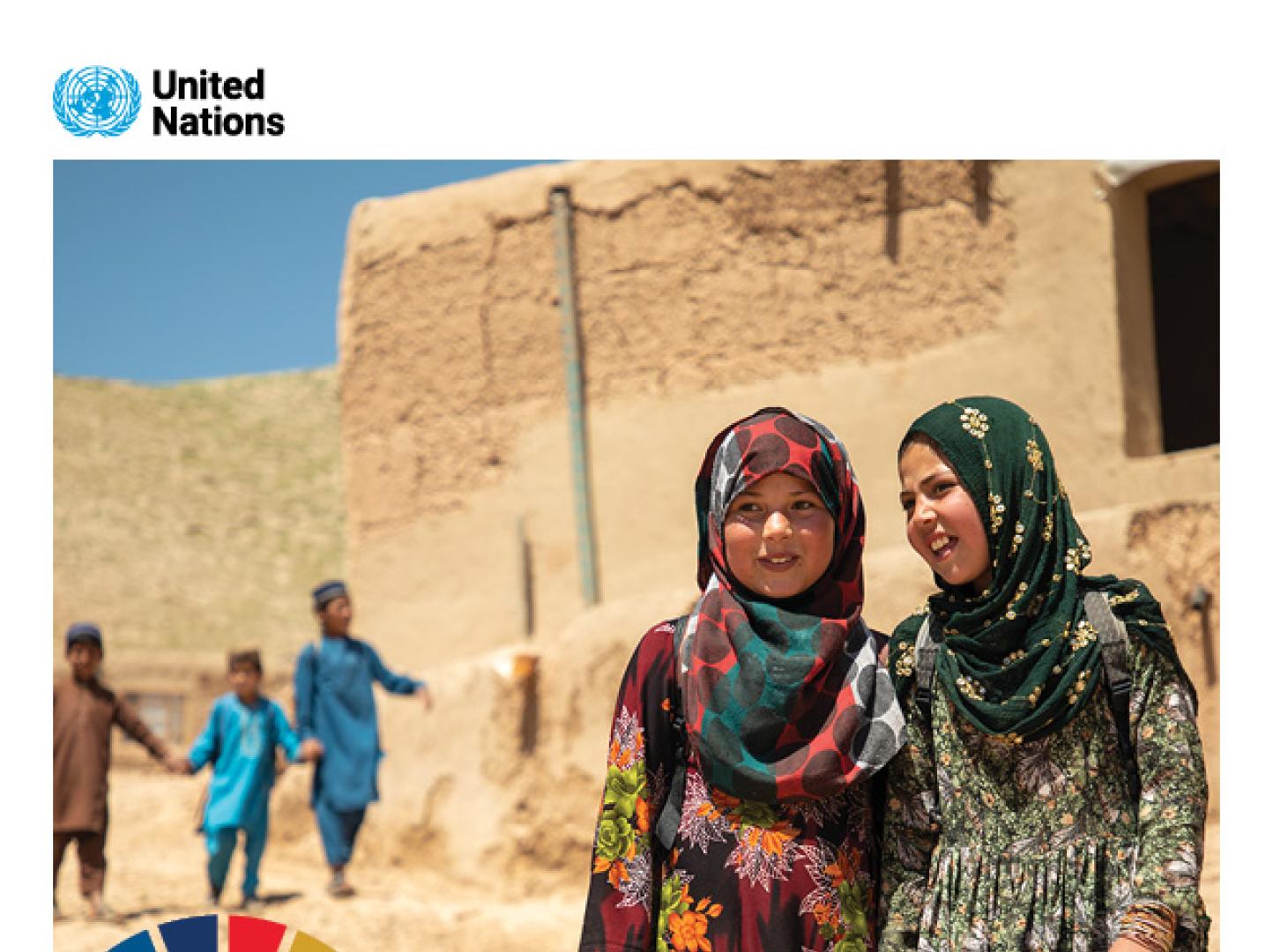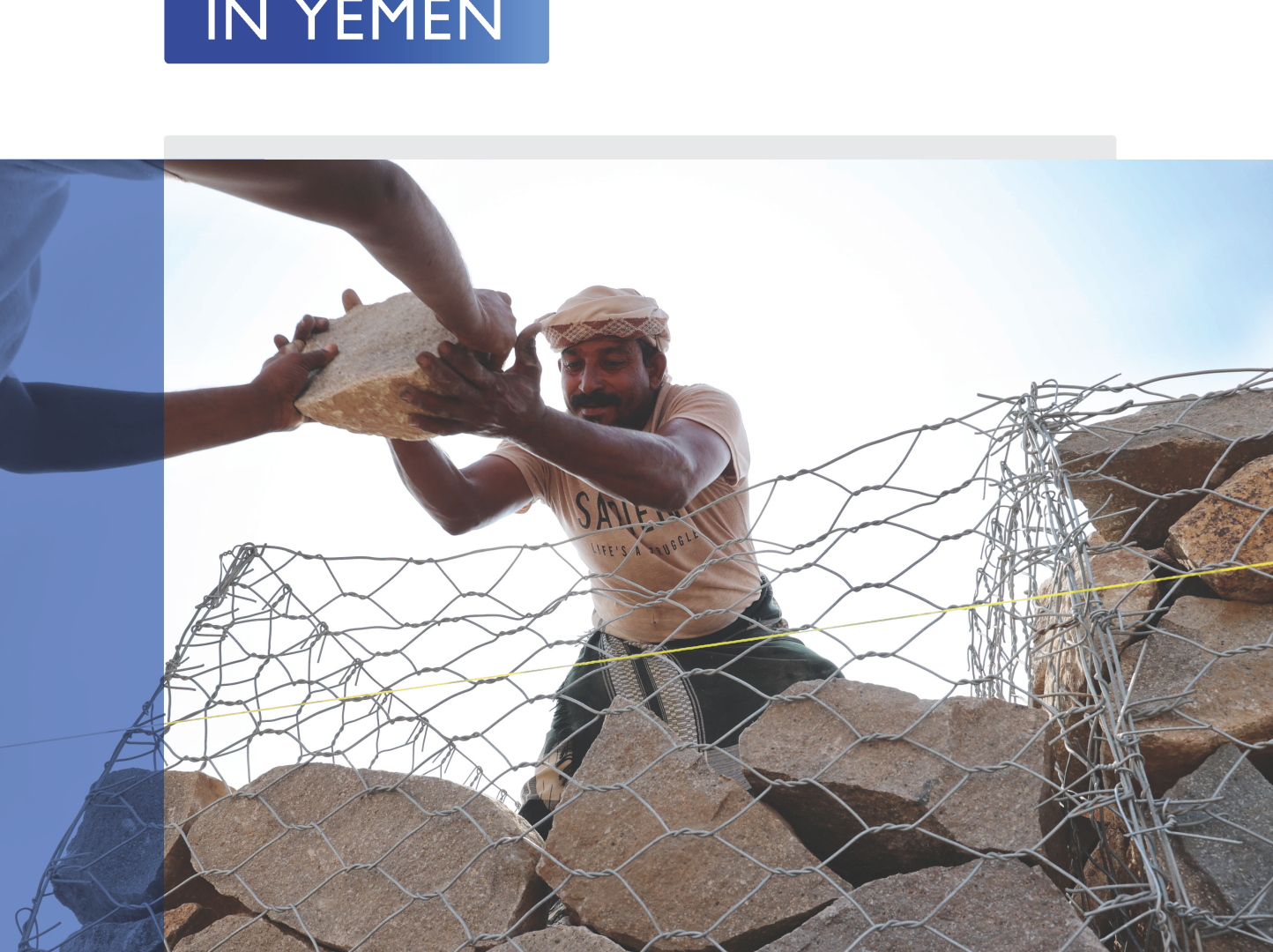Being the Change in Yemen: Improving Integrated Water Resources Management for Food Security

In Yemen, every drop of water counts. This is so because Yemen is one of the world’s most water-scarce countries and current groundwater withdrawals exceed annual recharge. Dwindling groundwater resources directly threaten agricultural production because the sector accounts for 90 percent of water withdrawal, leaving municipal and industrial usage at 8 percent and 2 percent respectively. The country lacks effective infrastructure to harvest rainwater for water supply and groundwater recharge. Water, which could have been used to recharge groundwater or agriculture production, goes to waste as it flows to the sea, untapped.
Climate change and rapid population growth have put massive pressure on the limited water resources in Yemen. Water scarcity in Yemen means less water for agriculture production which in turn means less food available, threatening food security and nutrition. This comes at a time when the country has been battered by the ongoing conflict which has disrupted agrifood systems.
About 14.5 million people in Yemen are without access to safe drinking water and reliable sanitation facilities. This presents the right conditions for bacterial diseases, such as cholera, to spread fast, putting large populations at high risk. This is pertinent in peri-urban slums and areas populated by internally displaced people (IDPs). This was the case when there was a cholera outbreak, in 2016, which spread to 19 governorates, affecting 53 000 people.
Not a day passes without stakeholders discussing or thinking of ways to address the water situation in Yemen. As such, talking about this issue during the World Water Day heightens attention on this perennial problem which threatens to spill into a catastrophe. Yemen’s case is dire and we need to act now as we may be running out of time.
This year’s World Water Day theme: “Accelerating change” with the slogan “Be the change you want to see in the world”, calls us to act at a quickened pace. We are encouraged to change the way we use, consume and manage water. More so, this is even more appropriate for Yemen where there is urgent need to address water scarcity and ensure that the limited resources are managed sustainably.
Depleting water resources, a threat to livelihoods
The depletion rate of groundwater is very high in zones across Yemen, with the hardest hit being the highlands where annual water table declines of between 2 and 6 metres have been observed. Such sharp declines, recorded in Sa’dah, Rada’a, Taiz, Amram and Sana’a basins significantly reduce spring-fed irrigation and increase the cost of drawing water for agricultural purposes. In coastal zones overexploitation of groundwater leads to salt water intrusion, which affects human consumption.
Rainwater harvesting systems are used as an alternative to groundwater and these include terraces, check dams, ponds, and spate irrigation. Spate irrigation[1] is practiced in Yemen along wadi courses and in the plains. It has been practised for thousands of years. Besides providing irrigation, spates recharge shallow aquifers and filling cattle ponds. Rainwater amount and frequency has recently become erratic in Yemen because of climate change. Last year Yemen experienced a severe drought and flooding within the same season, which goes to illustrate the severity of climate change.
Current annual renewable freshwater resources[2] in Yemen are estimated at 86 cubic metres per person and this falls far below the absolute threshold of 500 cubic metres per capita. Across Yemen, groundwater is being depleted at twice the rate its being replenished. This means that, for example, all the 13 000 wells used as sources of water in the Sana’a basin, will dry up, spelling doom for communities who use the water for domestic, crops and livestock use.
Farmers go to great depths to tap groundwater including fossil water, in the Sanaa Basin. The average depth of wells in the basin reached 400 metres, depending on the location and type of aquifer being used. However, it is reported that, due to Qat[3] irrigation, some wells in the Sanaa Basin reached depths of up to 700 metres or more to access groundwater resources. Drawing water from such depths comes at a cost to farmers who use diesel pumps to draw the resource. Water supply in Sana’a City also suffers as drawing water from such deep levels affect the aquifer.
Following the flow to ascertain how the precious liquid is utilised shows that Qat production accounts for 30 percent of the water drawn from the Sana'a Basin. This leaves humans, food production and livestock scrambling for the remainder. Qat requires intensive irrigation before harvesting and water is used to grow Qat over domestic and urban uses, decreasing the access and availability to Yemeni citizens. According to an FAO report, the high water consumption of Qat increases physical water scarcity by reducing the available surface and groundwater sources.
This paints a gloomy picture about the water situation in Yemen.
Water scarcity has ripple socio-economic effects on Yemenis. The lack of the precious liquid has seen localized conflicts as communities fight over the few and sparse sources of water. Research by Sana’a University found that about 70 – 80 percent of conflicts in Yemen are over water. The poor and vulnerable, are usually trampled in these conflicts leaving them even more food and nutrition insecure. Women are not spared either as they bear the brunt of the food and nutrition insecurity resulting from water scarcity. Women and children walk long distances, foraging for water. They are also at the receiving end whenever a conflict over water breaks out.
FAO’s interventions in the water sector in Yemen
Given the foregoing, it is clear that FAO has its work cut out in its endeavour to ensure food and nutrition security in Yemen. As such, FAO is helping farmers in Yemen to make better use of available water resources to improve sustainability and reduce conflicts.
In the Sana’a basin, for example, FAO piloted an integrated water resources management (IWRM[4]) approach to managing water resources in the basin to combat depletion of underground aquifers. The project, funded by the Ministry of Foreign Affairs of the Kingdom of the Netherlands, successfully reduced the water use on irrigated land by 19 percent; from 72.6 cubic metres per hectare a year to 58.56 cubic metres a hectare per year. This was achieved through adoption of modern irrigation equipment, piped conveyance systems, protected agriculture (greenhouses), recharge of underground aquifers, planting perennial tree crops (almonds and peaches), and use of rehabilitated water harvesting infrastructure.
A follow up project, funded by the same financing partner, is currently underway and it builds on the success of the initial project and seeks to strengthen water use efficiency. Through this project, FAO is helping national authorities, farmers and local communities to make better use of available water resources within the Sana’a basin.
An additional vital component of the current project is to build the capacities of the Water User Associations (WUAs) in water resource investments to ensure sustainable water availability and use. This promotes more gender-sensitive governance of WUAs and enhance agricultural productivity through the introduction of climate-smart agricultural practices while promoting community cohesion and strengthening the capacity of local communities to resolve water-based conflicts.
FAO with support from Japan has installed small-scale wastewater treatment facilities that can produce safe water for irrigation in the Sana’a basin. This The treatment plants use the power of gravity to cycle the water through the various stages of cleaning ensuring that treated water meets the standards required for use in agriculture. This goes a long in combating outbreaks of diseases such as cholera as farmers use treated wastewater.
Apart from the works in the Sana’a basin, FAO is implementing other interventions such as the four-year water management and food security programme in Wadi Hajr, which is also funded by the Netherlands. The programme will rehabilitate irrigation infrastructure damaged by recent flooding. It provides more food security and income for the farming communities in the Wadi, including women and youth in the area. Furthermore, this programme strengthens community watershed governance and promoting ecological and restorative agriculture, for example growing wheat, throughout the watershed.
Additional interventions are carried out through the “Resilience Programme in the Irrigation and Agricultural Sector in Yemen” which is funded by the Federal Republic of Germany, through the German Development Bank (Kreditanstalt für Wiederaufbau - KfW). FAO is rehabilitating farm level irrigation infrastructure. This is done through cash-for-work, which creates employment and income opportunities. Additionally, FAO is engaging communities to increase their climate resilience, reduce conflict over water and disaster risk reduction.
Other interventions help farmers improve irrigation systems and rehabilitate or construct water and land infrastructure. Crops grown under irrigation include cereals, fruits, vegetables, cash crops, pulses and fodder. Through improved rainwater harvesting techniques, FAO has improved access to water and easing the load on women and children who traditionally collect water.
Under the Hand in Hand Initiative, FAO is working with the authorities in Yemen to develop the National Agriculture and Fisheries Strategy and Investment Plan 2030. This strategic document addresses challenges in the water sector as well as looking at natural resources management, disaster risk response and climate change adaptation needs or options in Yemen.
Conclusion
In Yemen, marking World Water Day entails taking stock of what has been done and what is still to be done. It is a time to acknowledge the generous funding from partners and the collaboration with various stakeholders within the country. It is also a time to call for more action to spur further investment into water resources management as the current situation is untenable
It is clear from the above that the water situation in Yemen is precarious. Current efforts have only address part of a very complex and huge water problem that is developing in Yemen. A lot more is still to be done. More collaborative efforts are needed as the situation may soon spiral out of control.
One major intervention should be the strategic investment in enhancing IWRM across the country. It is also vital to undertake deep groundwater mapping across the country to ascertain where groundwater is available. This will inform future policies and interventions.
Furthermore, it is critical to continue exploring ways of increasing water efficiency and water productivity through advanced irrigation technologies and other climate smart agriculture approaches. Addressing climate change entails implementing innovative approaches to shield farmers, for example drought tolerant crops. FAO is willing to play a critical role in coordinating these efforts, as it would tap into its expertise in terms of IWRM.
With the rapid depletion of groundwater resources and rapid population growth, Yemen is on the verge of an untenable situation where only the renewable water resources will be accessible. As such, more investment should be made towards rainwater harvesting. Additionally, it is vital to craft sectoral policies with clear regulatory frameworks and legislations that will be rigorously enforced. Finally, future programming encourage conversion from water intensive Qat growing to food production including cash crops like coffee.
Dr Hussein Gadain is the FAO Representative in Yemen
[1] Spate irrigation is a type of water management, unique to arid regions bordering highlands. The spate irrigation systems support low value farming systems.
[2] Renewable water resources include average annual flow of rivers and recharge of aquifers generated from rainfall from within the country and those water resources that are not generated in the country, such as inflows from upstream countries.
[3] A mild stimulant regularly chewed by about 70 percent of Yemeni men.
[4] IWRM is a holistic approach to water management that links land and water development within a catchment and links social and economic development with protection of natural ecosystems. It is a concept that attempts to coordinate and balance competing demands for water (i.e., domestic, municipal, agricultural, industrial and environmental) in a way that optimizes benefits and enhances equity.







